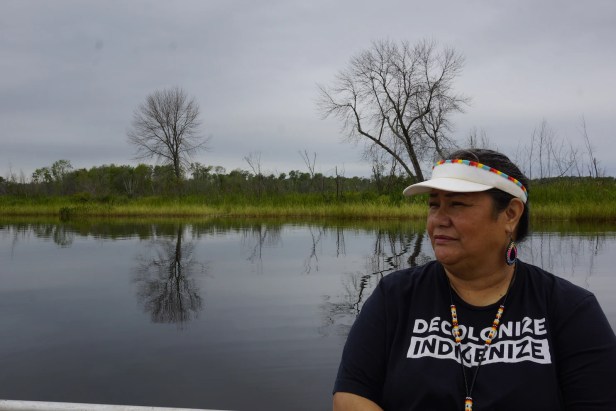Lake Superior’s Forever Chemicals
By Shantal Riley | The Washington Post Magazine | January 12, 2022

Read the full article by Shantal Riley (The Washington Post Magazine)
“A mass of gray clouds loomed over a panorama of humid wetlands in late summer on the Bad River Reservation in northern Wisconsin. Carpets of bright-green grass blanketed the glassy surface of the water, accented here and there by clusters of purple loosestrife, a spiky invasive plant, as an aluminum skiff glided silently over the water. Edith Leoso, tribal historic preservation officer for the Bad River Band of Lake Superior Chippewa, leaned over the edge of the boat, running her hand across the bushy grass tips and loosening showers of wild rice. ‘If it sinks to the bottom, that means it’s ripe,’ she said.
…The rice grows on the Kakagon-Bad River Sloughs, which sitatop 16,000 acres of wetlands on the southern rim of Lake Superior. The area serves as a spawning ground forlake sturgeon, walleye, yellow perch and northern pike. Both fish and wild rice are staple foods of the Anishinaabe, as the Ojibwe call themselves.
Early last year, the state of Wisconsin issued a fish consumption advisory that recommended eating no more than one meal a month of Lake Superior rainbow smelt, caught by tribes and local anglers during smelt runs in the spring. It was the first advisory for any of the Great Lakes warning of fish with elevated levels of PFAS — perfluoroalkyl and polyfluoroalkyl substances, a group of man-made chemicals linked to cancer that have shown up in drinking water systems around the country.
PFAS are known as ‘forever chemicals’ because they don’t break down in the environment. After years of industrial use, the federal government recently took steps to regulate them. But will it be enough to assure the safety of the Indigenous people who have fished on the lake for thousands of years — and depend on the fish for survival?”…
This content provided by the PFAS Project.
Location:
Topics: